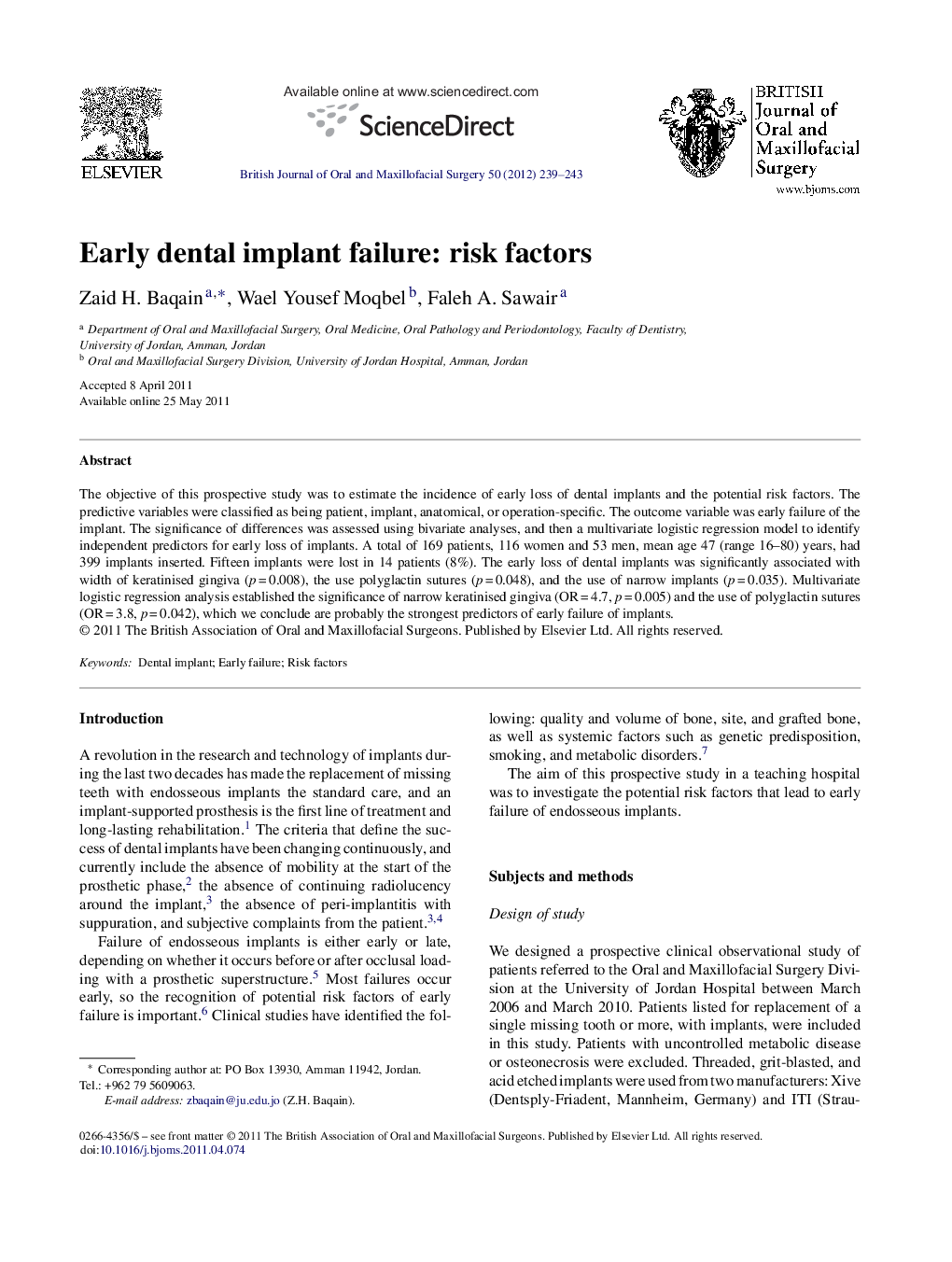| Article ID | Journal | Published Year | Pages | File Type |
|---|---|---|---|---|
| 3124290 | British Journal of Oral and Maxillofacial Surgery | 2012 | 5 Pages |
The objective of this prospective study was to estimate the incidence of early loss of dental implants and the potential risk factors. The predictive variables were classified as being patient, implant, anatomical, or operation-specific. The outcome variable was early failure of the implant. The significance of differences was assessed using bivariate analyses, and then a multivariate logistic regression model to identify independent predictors for early loss of implants. A total of 169 patients, 116 women and 53 men, mean age 47 (range 16–80) years, had 399 implants inserted. Fifteen implants were lost in 14 patients (8%). The early loss of dental implants was significantly associated with width of keratinised gingiva (p = 0.008), the use polyglactin sutures (p = 0.048), and the use of narrow implants (p = 0.035). Multivariate logistic regression analysis established the significance of narrow keratinised gingiva (OR = 4.7, p = 0.005) and the use of polyglactin sutures (OR = 3.8, p = 0.042), which we conclude are probably the strongest predictors of early failure of implants.
